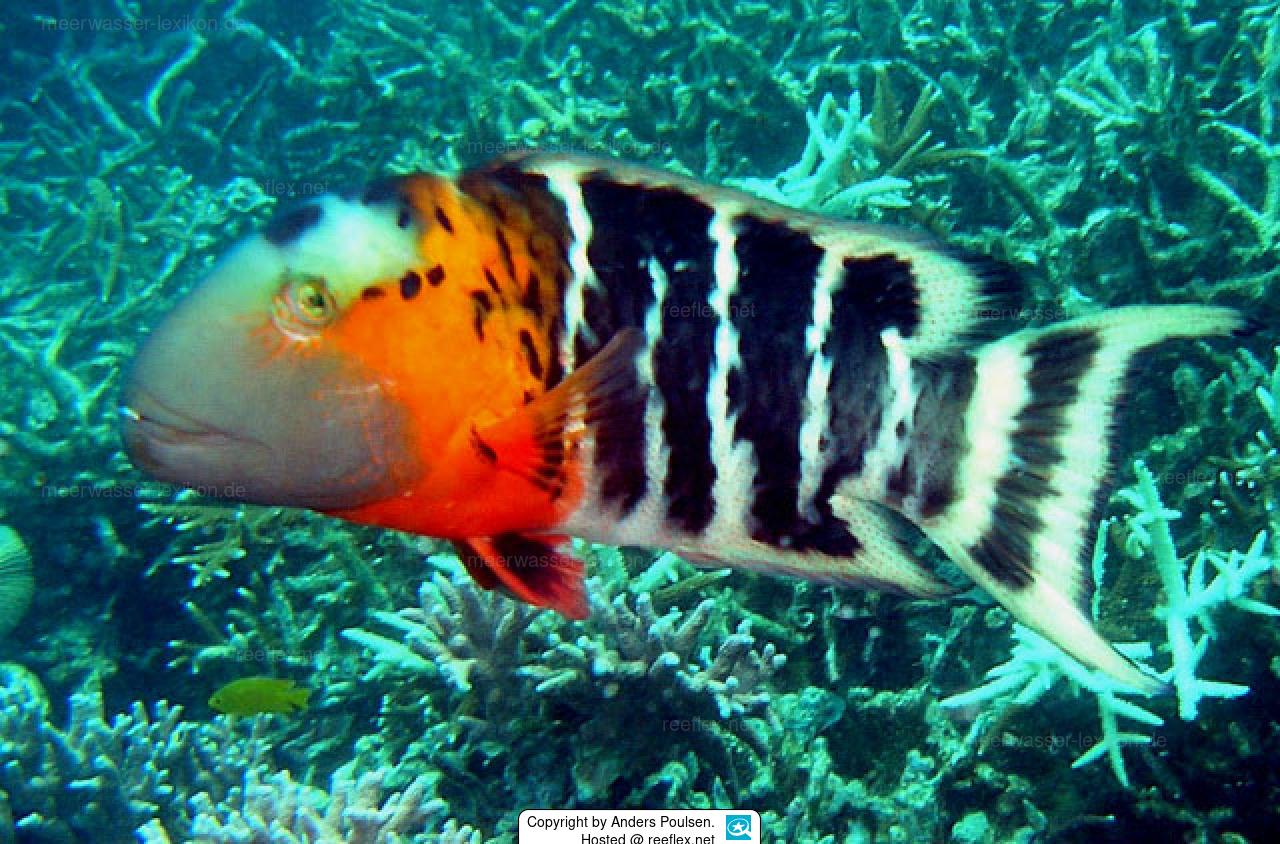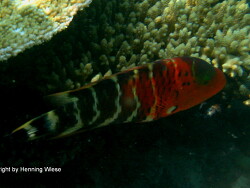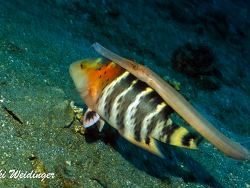Info
FishBase:
Adults inhabit lagoon and seaward reefs, specially in areas with sand, rubble and mixed corals. Feed on hard-shelled invertebrates, mollusks, crustaceans and sea urchins.
Young common on silty reefs, usually along edges with algae-rubble and sand.
Synonyms:
Cheilinus fasciatus fasciatus (Bloch, 1791)
Cheilinus quinquecinctus Rüppell, 1835
Labrus enneacanthus Lacepède, 1801
Sparus bandatus Perry, 1810
Sparus fasciatus Bloch, 1791
Jumping guard
A jumping guard prevents (nocturnal) fish from jumping out.
Wrasses, blennies, hawkfishs and gobies jump out of an unprotected tank in fright if their night rest is disturbed, unfortunately these jumpers are found dried up in the morning on carpets, glass edges or later behind the tank.
https://www.korallenriff.de/en/article/1925_5_Jump_Protection_Solutions_for_Fish_in_the_Aquarium__5_Net_Covers.html
A small night light also helps, as it provides the fish with a means of orientation in the dark!







 Anders Poulsen, Dänemark
Anders Poulsen, Dänemark






















